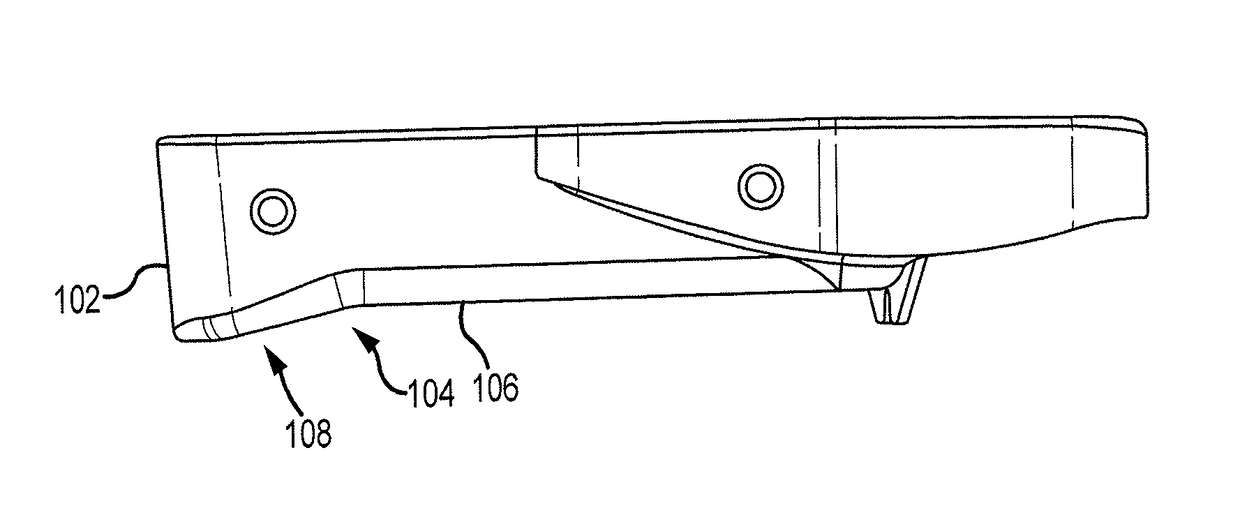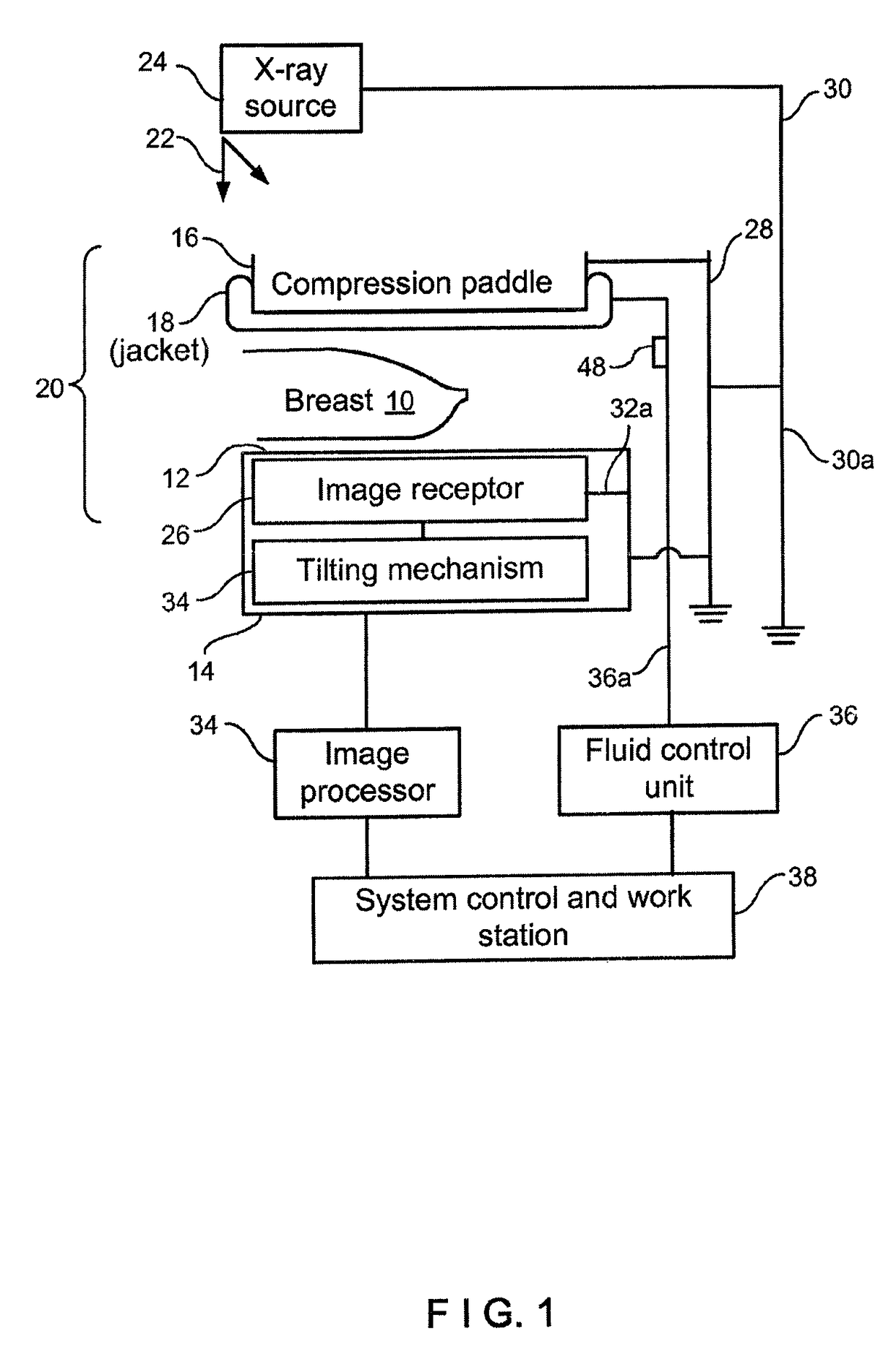X-ray mammography and/or breast tomosynthesis using a compression paddle
a compression paddle and x-ray technology, applied in mammography, medical science, diagnostics, etc., can solve the problems of image artifacts, inability to position and manipulate the breast during the technician's work, and non-uniform distribution of compression force throughout the breast, so as to improve breast imaging and patient comfort.
- Summary
- Abstract
- Description
- Claims
- Application Information
AI Technical Summary
Benefits of technology
Problems solved by technology
Method used
Image
Examples
Embodiment Construction
[0034]Except as otherwise noted, the articles “a,”“an,” and “the” mean “one or more.”
[0035]Referring to FIG. 1, a patient's breast 10 is immobilized for x-ray imaging between a breast platform 12 and a compression paddle 16. Platform 12 can be the upper surface of a housing 14. At least an underside of compression paddle 16 is covered with a non-rigid paddle jacket, such as, preferably, an inflatable paddle jacket 18. Platform 12 and paddle 16 form a breast immobilizer unit 20 that is in a path of an imaging beam 22 emanating from x-ray source 24. Beam 22 impinges on image receptor 26 that is in housing 14.
[0036]Immobilizer 20 and housing 14 are supported on an arm 28. X-ray source 24 is supported on an arm 30. For mammography, support arms 28 and 30 can rotate as a unit about an axis such as at 30a between different imaging orientations such as CC and MLO, so that the system can take a mammogram projection image Mp at each orientation. Image receptor 26 remains in place relative to...
PUM
 Login to View More
Login to View More Abstract
Description
Claims
Application Information
 Login to View More
Login to View More - R&D
- Intellectual Property
- Life Sciences
- Materials
- Tech Scout
- Unparalleled Data Quality
- Higher Quality Content
- 60% Fewer Hallucinations
Browse by: Latest US Patents, China's latest patents, Technical Efficacy Thesaurus, Application Domain, Technology Topic, Popular Technical Reports.
© 2025 PatSnap. All rights reserved.Legal|Privacy policy|Modern Slavery Act Transparency Statement|Sitemap|About US| Contact US: help@patsnap.com



